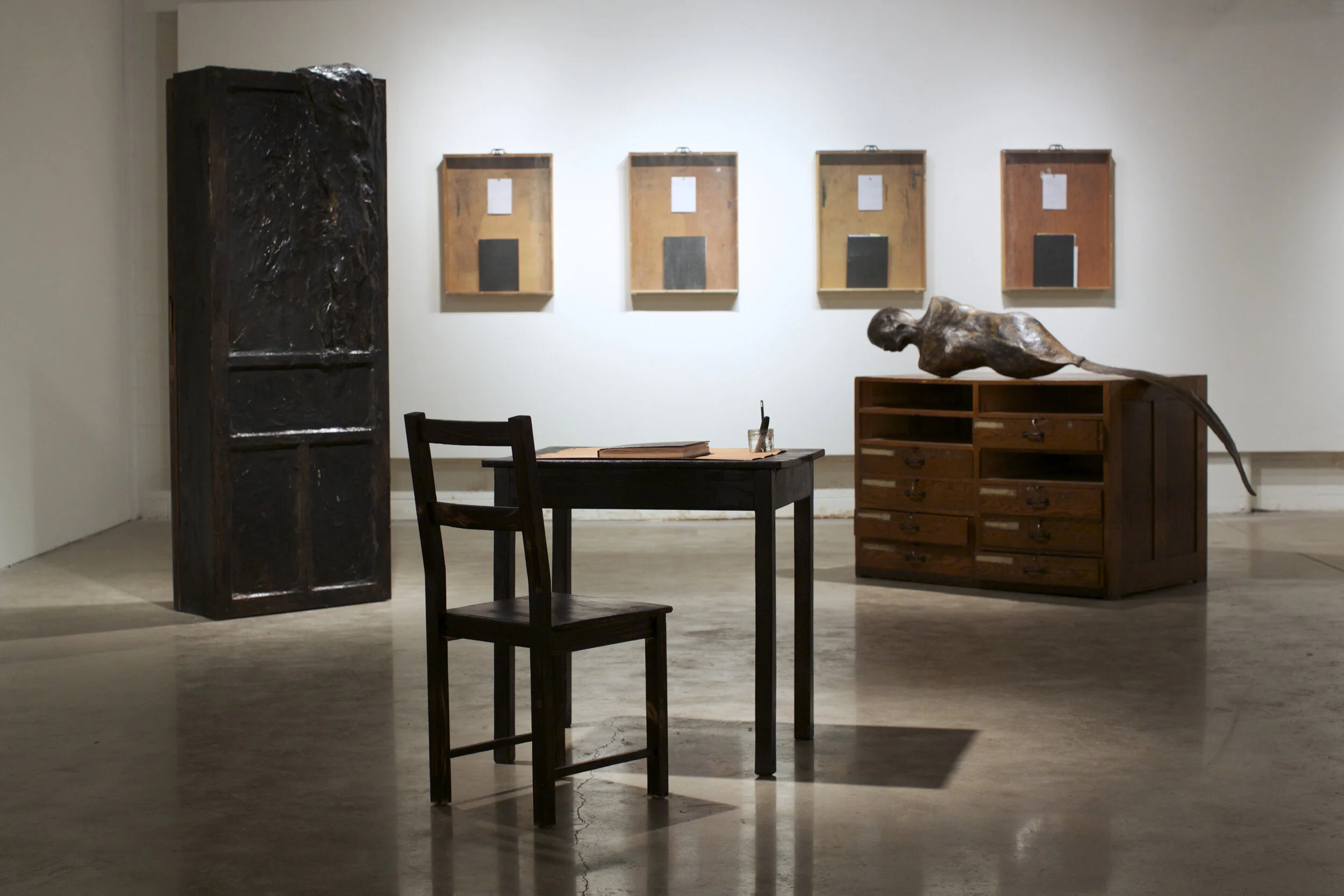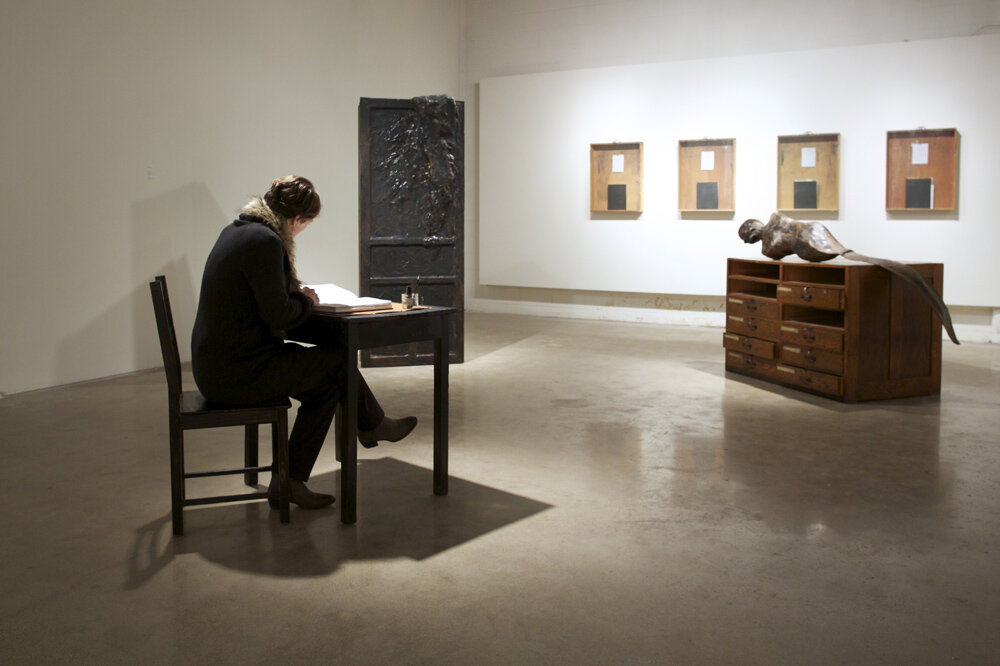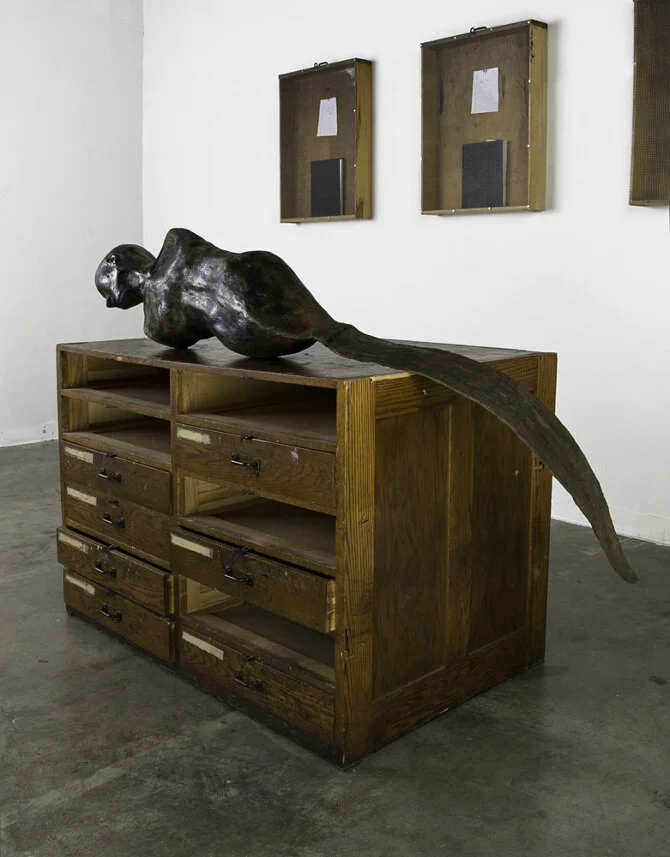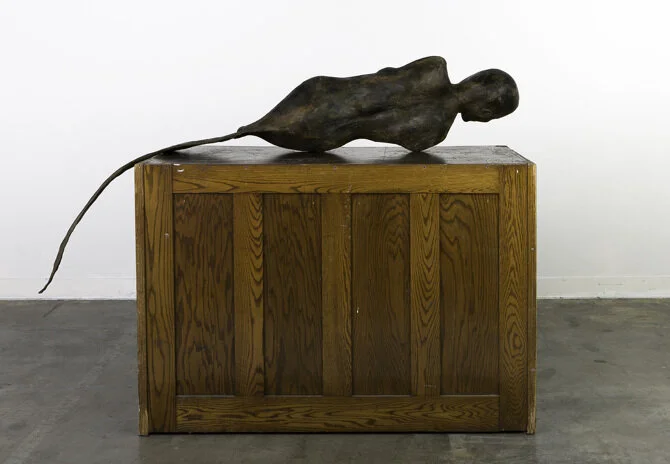Undertow artist talk at Rosalux Gallery
Rutherford’s work depicts geographies of reality and nostalgia and the spaces where they intersect or collide. Working in various media, she explores the liminal space of the in-between, as experienced by those who have left their homeland. Her paintings and mixed media installations explore the relationship between the still (painting) and the moving (film) and how these act as metaphors for time and memory. She employs visual metaphors such as bridges, roads, and bodies of water as reference to transitory and transitional spaces throughout her work.
Krinke’s work embodies memory as secrets and fragments, and a source of intrusion and obsession. Her work in the exhibition features some of her hundreds of black bound notebooks: visible but trapped in a cabinet, closet, and drawers. Her sculptural installation includes a human-animal hybrid that alludes to anxiety and adaptation. The writing desk invites visitors to sit and read a notebook where the work on display is drawn and discussed. Krinke’s work can be seen in multiple ways - struggle, growth, beauty, stress, trauma, coping, transcending - and references issues felt both individually and collectively.
About the artists:
Rebecca Krinke is a multidisciplinary artist working across sculpture, installations, public art, site works, and social practice. In broad terms, all of her work deals with issues related to trauma and recovery. Krinke’s sculpture uses the body, and aspects of domestic objects and architecture, to investigate and embody trauma. Her practice has increasingly engaged ideas of trauma and recovery in the same works, including her recent participatory projects, What Needs To Be Said? (2012), Minneapolis-St. Paul, Flood Stories (2011), Fargo, ND, and Unseen/Seen: The Mapping of Joy and Pain (2010), Minneapolis-St. Paul. All of these projects created temporary social spaces for emotional engagement and catharsis.
Elaine Rutherford is an interdisciplinary artist whose practice involves exploring the visual and conceptual relationships between various media such as painting, video and sculpture, and mixed media installation. Working from her personal experiences of displacement, Rutherford’s work explores the physiological space inhabited by the immigrant, which is a permanent space of both belonging and non-belonging, of passage and boundary, a place of both exile and agency. While the work in the exhibition is rooted in personal experience of nostalgia and displacement, Rutherford’s art is moving toward reflecting on parallels between cultural connections to the land and forced migrations of native peoples in both Scotland and Minnesota. Rutherford has exhibited nationally and internationally.



